Good Mentors are Precious Resources
 In Barney’s (1991) classic article, a company’s competitive advantage comes from how it uses its distinctive resources. To be be valuable to a company, a resource needs to be valuable, rare, inimitable, and not easily substituted. These precious resources may take different forms. A consumer products company invests in building and maintaining its brand image and identity; think of the lengths Apple goes to to protect its logo and unique design. A retail establishment uses its location to offer convenience to customers that its competitors cannot; think about Walgreens and CVS fighting for every busy intersection they can find. A hospital invests in attracting and retaining top flight medical talent to defend its space in the competitive health care market; think of Barnes-Jewish Hospital allying itself with Washington University Medical School to recruit the top physicians.
In Barney’s (1991) classic article, a company’s competitive advantage comes from how it uses its distinctive resources. To be be valuable to a company, a resource needs to be valuable, rare, inimitable, and not easily substituted. These precious resources may take different forms. A consumer products company invests in building and maintaining its brand image and identity; think of the lengths Apple goes to to protect its logo and unique design. A retail establishment uses its location to offer convenience to customers that its competitors cannot; think about Walgreens and CVS fighting for every busy intersection they can find. A hospital invests in attracting and retaining top flight medical talent to defend its space in the competitive health care market; think of Barnes-Jewish Hospital allying itself with Washington University Medical School to recruit the top physicians.
In all of these instances, companies succeed because they recognize the value their precious resources deliver and take steps to make sure the resources are used to their advantage. It is with this idea in mind that I suggest that mentors are equally precious resources to an organization. Mentors carry an organization’s culture and values, sharing them with the next generation of talent. They can accelerate growth and development of rising stars by sharing their experience and shortening learning curves. They are also scarce resources. Since they tend to have longer tenures in their organizations and industries and have ascended to management roles, they are necessarily in limited supply. Companies who use mentors to their advantage are the ones who use this limited resource strategically.
Think about what would happen if Apple decided to design a toaster. It would doubtless be have beautiful design, with intuitive controls and features you didn’t know that you wanted. Ask yourself: is that the best way for Apple to devote its precious design and brand capital resources? I would imagine that the market for feature-rich, artfully crafted toasters is a lot smaller than the resources it would take for Apple to design such a product. The time and expense spent on that toaster would have been much better devoted to designing and producing the next iDevice that you didn’t know you couldn’t live without.
The best use of a company’s mentoring resources is to direct them toward where they will have the greatest impact. I’ve written in the past how mentoring isn’t for all people at every stage in their careers. My best advice to clients is to make mentoring both voluntary and selective. Open the process up to those who want mentoring, and direct mentoring to those from whom the company will get its greatest return on the mentoring investment. Just as Apple wants Jony Ive devoting his time to designing the best products, your company should have its mentors working with your best talent.
Barney, J. (1991). Firm resources and sustained competitive advantage. Journal of Management, 17, 99-120.
To comment on this article or to learn more about mentoring, contact Rik Nemanick at rik@nemanick.com
